| Columns Retired Columns & Blogs |
Avantgarde Acoustic Uno Nano loudspeaker Measurements
Sidebar 3: Measurements
Like its predecessor, the Avantgarde Uno Series Two, the Uno Nano's voltage sensitivity was both extraordinarily high and close to specification, at 102dB(B)/2.83V/m. It could be argued that, at normal playback levels, this speaker has no moving parts! The speaker's plot of impedance magnitude and phase (fig.1) shows the behavior of the tweeter and the midrange unit, the woofer module being self-powered. The large peak at 53Hz presumably indicates the fundamental resonance of the midrange driver, which is well below the horn's cutoff frequency, while I assume the small spike at 19kHz is due to the dome resonance of the tweeter. The impedance lies above 6 ohms at all frequencies and remains above 8 ohms for much of the audioband. As well as being genuinely sensitive, the Uno Nano is a very easy speaker to drive, both factors making it eminently suitable for use with single-ended-triode amplifiers.
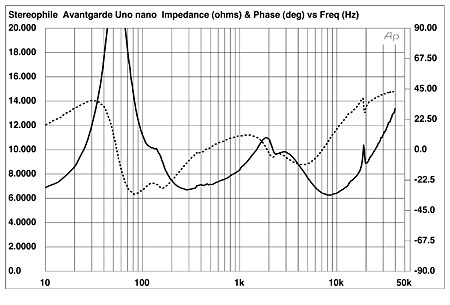
Fig.1 Avantgarde Uno Nano, electrical impedance (solid) and phase (dashed). (2 ohms/vertical div.)
Logistical difficulties meant that I could not examine the vibrational behavior of the Uno Nano's woofer enclosure with an accelerometer. But I did listen to the panels with a stethoscope while I drove the SUB225-N's line-level input with a signal generator (actually, my iPod Touch running the excellent Signal Suite app from Faber Acoustical. A reasonably strong resonant mode could be found on all surfaces at 270Hz, with another at 325Hz on the side panel. However, Robert Deutsch heard no colorations that could have arisen from this behavior.
Unlike the original Uno, which hummed electrically when I connected it to my measurement system and power amplifier no matter how I experimented with the grounding, the Uno Nano was deathly quiet. The behavior of the SUB225-N module can be adjusted with two sets of switches—one marked 20Hz, 30Hz, and 40Hz, the other H, M, and L—and two rotary controls. The lower rotary control is for woofer volume, the upper for adjustment of the upper-frequency behavior as set by the H/M/L switch.
My first series of tests examined how the woofer module's nearfield response varied with different combinations of these controls and switches. The results are shown in fig.2. The three traces to the left of the graph reveal that the 20, 30, and 40Hz settings of the top switch correspond to the –6dB frequencies; the traces to the right of this graph were taken with the bottom switch set to H, M, and L, and the rotary control set in each case to its minimum (1) and maximum (11) values, and with the black trace indicating the behavior with the control set to its factory defaults of 20Hz, H, and 4. The H1 and M11 settings (blue and cyan traces) are identical to H4; H11 (red) boosts the output at 300Hz by 8dB; L11 (brown) drops the output at 300Hz by 5dB; M1 (magenta) drops it by 10dB; and L1 (green) drops it by 15dB. These controls allow the SUB225-N's output to be modified in a more predictable manner than did the original Uno's woofer controls.
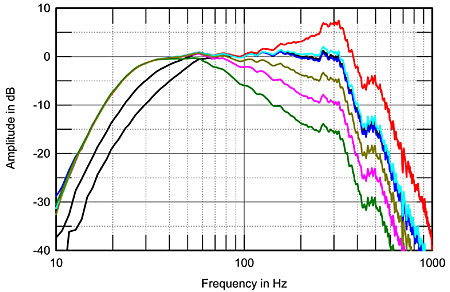
Fig.2 Avantgarde Uno Nano, nearfield response of SUB225-N woofer module with controls set to (from left to right): H4 and 20Hz, 30Hz, and 40Hz; H1 and 11; M1 and 11; L1 and 11 (see text).
The green trace in fig.3 repeats the SUB225-N's nearfield response with the controls set to the factory-default positions. The blue and red traces are the farfield responses of the midrange and tweeter horns, respectively, both taken on an axis level with the top of the woofer module, which I was informed by the distributor was the optimal listening axis. There is no crossover in series with the midrange unit; it is driven by a full-range signal, with the horn acoustically providing the necessary bandpass function. The driver's output is basically quite flat in its 350Hz–2.5kHz passband, but with a sharply defined peak apparent at the top of that region, before it begins a very steep rollout. The tweeter rolls off very quickly below 2kHz, so I assume there is a series high-pass filter in its feed. Though the tweeter's response is rather uneven, the general trend is flat from 4 to 13kHz, above which it rolls off smoothly, other than a spike at the frequency of the impedance peak. However, it doesn't appear to extend quite low enough in frequency to optimally blend with the output of the midrange horn.
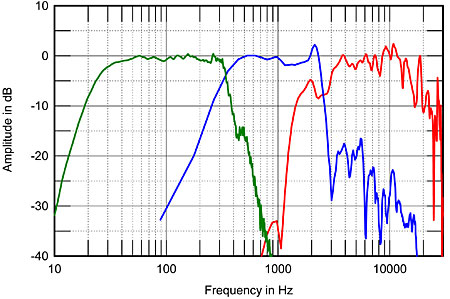
Fig.3 Avantgarde Uno Nano, acoustic crossover on optimal axis at 50", corrected for microphone response, with nearfield woofer response set to H4 and 20Hz (green trace).
As a result, there is a narrow but deep suckout at 2.6kHz in the Uno Nano's overall response, averaged across a 30° horizontal window on the optimal axis at 50" (fig.4). The original Uno was better in this regard, though its tweeter was a couple of dB "hotter" overall than the Nano's. On the other hand, the old Uno had the same lack of energy in the middle of the midrange as the newer design, presumably due to destructive interference between the outputs of the woofer and the midrange horn in the region where they overlap. To be fair to Avantgarde, however, they strongly warn against measuring not just the Uno Nano but all their speakers at distances of less than 2.5m (98"), because the relative differences between the distance of each drive-unit from the microphone will be extreme. Unfortunately, I can't place my microphone that far away from the speaker and still get a meaningful response that isn't corrupted by the reflections of the speaker's sound from boundaries. Therefore, these suckouts may look worse than they sound.

Fig.4 Avantgarde Uno Nano, anechoic response on optimal axis at 50", averaged across 30° horizontal window and corrected for microphone response, with nearfield woofer responses plotted below 330Hz.
Fig.5 shows how the Uno Nano's response changes to the sides of the optimal axis. (Just the changes are shown, meaning that the response in fig.4 appears as a straight line in this graph.) It can be seen that the upper suckout does indeed quickly fill in to the speaker's sides, resulting in an apparent ridge off axis at 2.6kHz (which is why RD endeded up not toeing in the speakers to the listening position); while the lower suckout does tend to fill in, this is not to extreme angles. More important, note how even the rolloff of the response to the speaker's side is with frequency. The dispersion of the two horns is well matched, meaning that the room's reverberant field will be uncolored. In the vertical plane (fig.6), the suckout in the crossover region between the midrange and treble horns fills both above and below the optimal axis, which is a low 32" from the floor when the speaker is not tilted back on its feet.
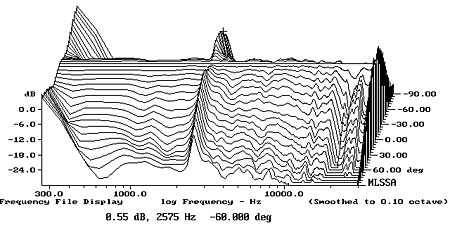
Fig.5 Avantgarde Uno Nano, lateral response family at 50", normalized to response on optimal axis, from back to front: differences in response 90–5° off axis, reference response, differences in response 5–90° off axis.
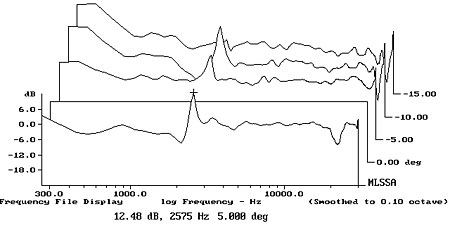
Fig.6 Avantgarde Uno Nano, vertical response family at 50", normalized to response on optimal axis, from back to front: differences in response 15–5° above axis, reference response, differences in response 5° below axis.
The Uno Nano's step response on the optimal axis (fig.7) indicates that the tweeter (the sharp spike at 4.3ms) is connected in inverted polarity, and that its output arrives at the microphone about 750µs before that of the midrange horn (the peak at 5ms), which is connected in positive polarity. The woofer module's output is the slow-rising positive pulse that starts just before 6ms and is overlaid with ringing from the midrange horn with a period equivalent to a frequency of 2kHz, which is where the peak in the frequency response lies.
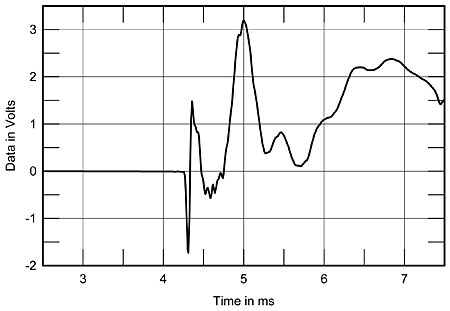
Fig.7 Avantgarde Uno Nano, step response on optimal axis at 50" (5ms time window, 30kHz bandwidth).
To clarify what is happening in the time domain, the individual farfield step responses are shown in fig.8, with the tweeter shown in red, the midrange in blue, and the woofer in green. The rise in the midrange unit's output coincides with the positive-going overshoot of the tweeter's output, implying that the suckout in the crossover region is due to the tweeter not extending quite low enough in frequency, rather than a phase mismatch. However, the positive rise of the woofer output initially coincides with the negative-going overshoot of the midrange unit's output, which gives rise to the midrange cancellation notch in the frequency response.
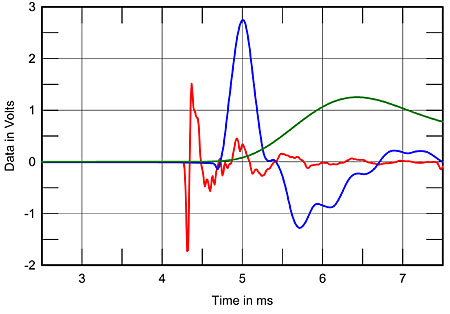
Fig.8 Avantgarde Uno Nano, step response of tweeter (red), midrange unit (blue), and woofer (green) on optimal axis at 50" (5ms time window, 30kHz bandwidth).
The tail of the midrange unit's step is overlaid with ringing, which can also be seen in the Uno Nano's cumulative spectral-decay plot (fig.9) as the ridge of delayed energy at the cursor position of 2.04kHz. In this respect, the Nano is not as well behaved as the original Uno. The region covered by the tweeter in this graph looks hashy, but as with the earlier version, I suspect that this behavior is due to reflections from the horn's mouth rather than to resonances as such.
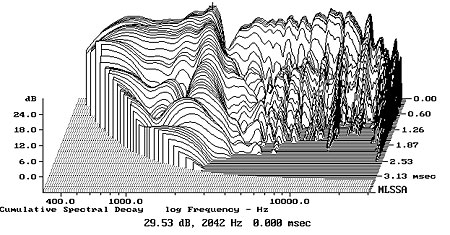
Fig.9 Avantgarde Uno Nano, cumulative spectral-decay plot on optimal axis at 50" (0.15ms risetime).
It is important not to draw too much from the deficiencies in the Uno Nano's measured behavior, some of which will have been exacerbated by the fact that I had to measure the speaker at half the recommended distance. On the plus side, the overall frequency-response trend is quite flat, and the very high sensitivity and benign impedance will make the speaker very amplifier-friendly. But owners should experiment with toe-in and vertical listening axis to get the best integration of the outputs of the three drive-units. And I would have liked to see a third rotary control that allowed the listener to adjust the phase of the woofers' output to optimize its blend with the midrange horn.—John Atkinson
- Log in or register to post comments




































